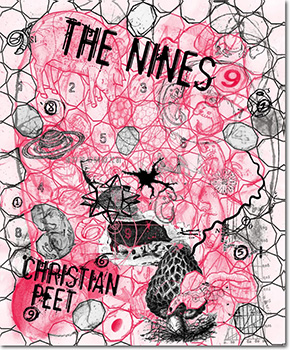There is an advantage in keeping the idol out of the public arena. Confronted with a robin carrying a coil of rubber, the pedestrian observer might muddle the image with the Big Idea of a Worm. Meanwhile, the rubbery characteristic of the worm might escape awareness completely, even permanently. For example, one may mutter, “My hubcap/dinner plate is round,” an objective actuality, but the concept of mathematical roundness remains to be seen.
Witness Intuitionist poet Michael Boyko, emerging from the bedroom, hands raised as if in prayer, entreating his marble-eyed friends to “Take it down a notch.” Dare ask that man, as his comrades sweat and babble, totter and flop, “How is it that the ordered variety of our phonemic systems grew out of the disorderly monotony of animal cries?” Some other night, you might gently remind young Mr. Boyko that it is not the expansion of the universe, per se, but rather the troublesome no-boundary condition, which causes disorder to increase.
You may test this for yourself, using only ground nutmeg, morning glory seeds, and a few household cleaning products. As your left hand slides out to the side and gravity forces your cold body to the floor, you may either stabilize yourself with your right hand or simply “give in.” Should you experience vertigo, nausea, or both, remind yourself—although you may be the subject of a cosmic achievement-based trial and may need to repeatedly demonstrate your worth by applying your skills to each unique situation as it occurs—there is often more than one acceptable solution.
Recall, too, our lost brother, Alfred Sisley, always the least cerebral and self-critical of the early Intuitionists, who until his dying day went on painting in the same old way—but with declining confidence. Let his last bland oil blots serve as a warning: the unassuming perception of nature is never enough.
For added reinforcement, carry this guide whenever you travel outside the confines of your office, home, or body. Look for streambeds, roadcuts, cliffs and excavations. Note hills and valleys and the patterns they assume. The informed traveler will recall that although they may look continuous, the Pretty Rings are actually composed of innumerable small particles ranging in size from a centimeter or so to several meters, each in a sovereign orbit around the sixth planet from our sun.
________________________
© 2003 Christian Peet. Published in the chapbook, The Nines (Book 1), from Palm Press. Originally published in SleepingFish.
 The nine movements of Book 1 include mutations born of an Edge.org interview with mathematician and philosopher Reuben Hersh, as well as a variety of appropriated critical, scientific, and instructional texts chosen randomly from the back of the author’s car after a cross-country exodus: including George F. Adams’ and Jerome Wykoff’s Landforms (A Golden Guide); Kenneth Clark’s Landscape Into Art; Stephen Hawking’s A Brief History of Time; Eric N. Franklin’s and William H. Watkins’ Breakdance!; Anne Waldman’s and Marilyn Webb’s collection of lectures by visiting authors, Talking Poetics from Naropa Institute; and James Webb’s The Occult Establishment.
The nine movements of Book 1 include mutations born of an Edge.org interview with mathematician and philosopher Reuben Hersh, as well as a variety of appropriated critical, scientific, and instructional texts chosen randomly from the back of the author’s car after a cross-country exodus: including George F. Adams’ and Jerome Wykoff’s Landforms (A Golden Guide); Kenneth Clark’s Landscape Into Art; Stephen Hawking’s A Brief History of Time; Eric N. Franklin’s and William H. Watkins’ Breakdance!; Anne Waldman’s and Marilyn Webb’s collection of lectures by visiting authors, Talking Poetics from Naropa Institute; and James Webb’s The Occult Establishment.
